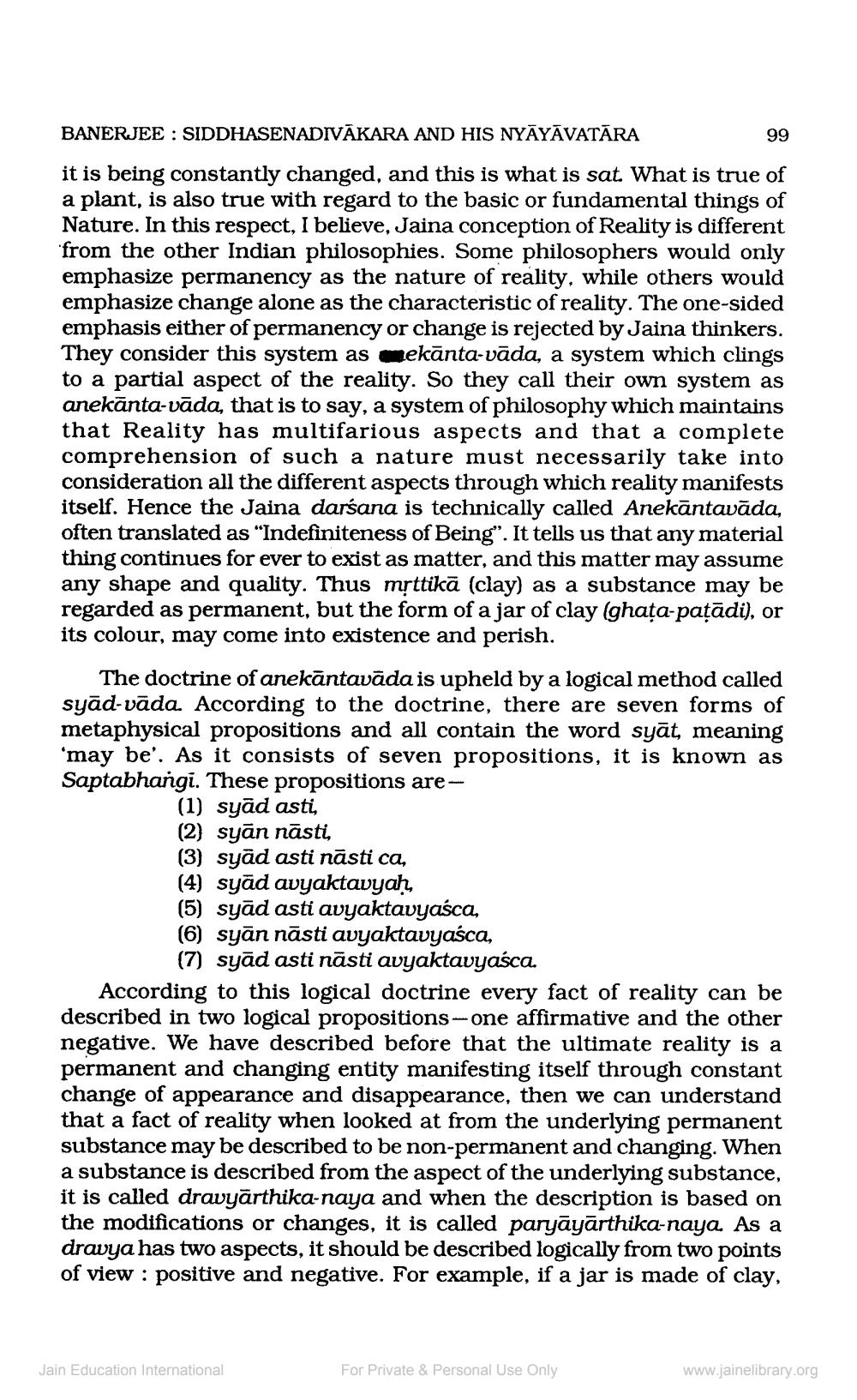Book Title: Jain Journal 1998 04 Author(s): Jain Bhawan Publication Publisher: Jain Bhawan Publication View full book textPage 9
________________ BANERJEE : SIDDHASENADIVAKARA AND HIS NYAYAVATARA 99 it is being constantly changed, and this is what is sat. What is true of a plant, is also true with regard to the basic or fundamental things of ure. In this respect, I believe, Jaina conception of Reality is different from the other Indian philosophies. Some philosophers would only emphasize permanency as the nature of reality, while others would emphasize change alone as the characteristic of reality. The one-sided emphasis either of permanency or change is rejected by Jaina thinkers. They consider this system as wekānta-vāda, a system which clings to a partial aspect of the reality. So they call their own system as anekānta-vāda, that is to say, a system of philosophy which maintains that Reality has multifarious aspects and that a complete comprehension of such a nature must necessarily take into consideration all the different aspects through which reality manifests itself. Hence the Jaina darśana is technically called Anekāntavāda, often translated as "Indefiniteness of Being". It tells us that any material thing continues for ever to exist as matter, and this matter may assume any shape and quality. Thus mịttikā (clay) as a substance may be regarded as permanent, but the form of a jar of clay (ghata-patādi), or its colour, may come into existence and perish. The doctrine of anekāntavāda is upheld by a logical method called syād-vāda. According to the doctrine, there are seven forms of metaphysical propositions and all contain the word syāt, meaning 'may be'. As it consists of seven propositions, it is known as Saptabhangi. These propositions are (1) syād asti, (2) syān nāsti (3) syād asti nāsti ca, (4) syād avyaktavyaḥ, (5) syād asti avyaktavyasca, (6) syān nāsti avyaktavyasca, (7) syād asti nästi avyaktavyasca. According to this logical doctrine every fact of reality can be described in two logical propositions-one affirmative and the other negative. We have described before that the ultimate reality is a permanent and changing entity manifesting itself through constant change of appearance and disappearance, then we can understand that a fact of reality when looked at from the underlying permanent substance may be described to be non-permanent and changing. When a substance is described from the aspect of the underlying substance, it is called dravyārthika-naya and when the description is based on the modifications or changes, it is called paryāyārthika-naya. As a dravya has two aspects, it should be described logically from two points of view : positive and negative. For example, if a jar is made of clay, Jain Education International For Private & Personal Use Only www.jainelibrary.orgPage Navigation
1 ... 7 8 9 10 11 12 13 14 15 16 17 18 19 20 21 22 23 24 25 26 27 28 29 30 31 32 33 34 35 36 37 38 39
